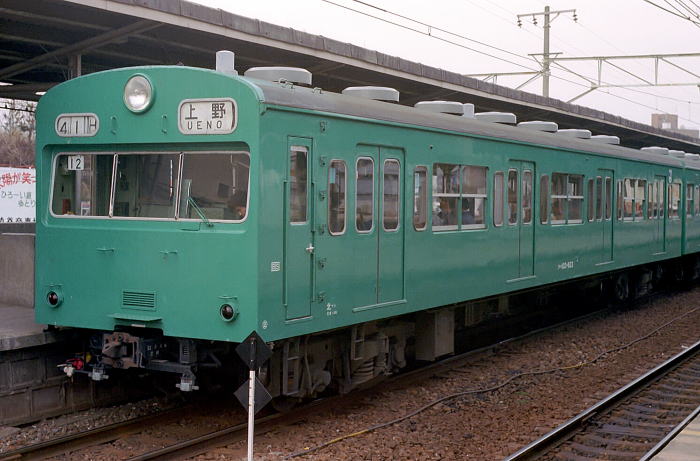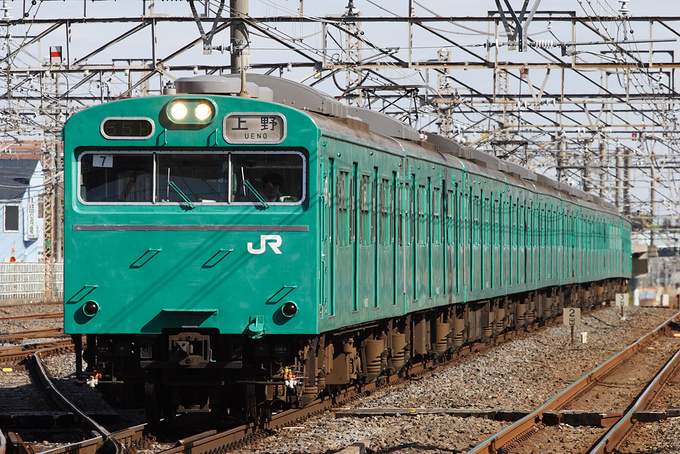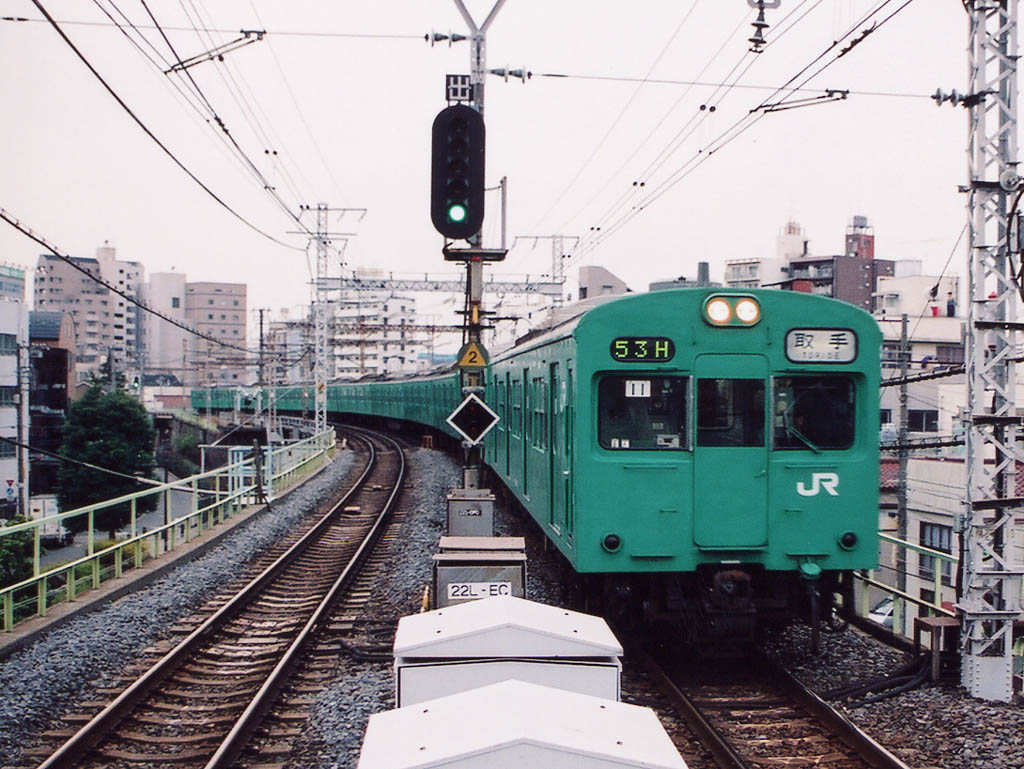Install the app
How to install the app on iOS
Follow along with the video below to see how to install our site as a web app on your home screen.
Note: This feature may not be available in some browsers.
You are using an out of date browser. It may not display this or other websites correctly.
You should upgrade or use an alternative browser.
You should upgrade or use an alternative browser.
Japan
- Thread starter connyxy
- Start date
Keikyu N1000 Series
https://drive.google.com/open?id=1atHq-OS0P-wnJkLscht0y6V36a7EhdZj
BY : Amar Prasugara
Oh that is sooo nice to have. Thank you for this present BYADL06
Keikyu N1000 Series
Sweet.
By the way, after a bit of inactivity, here's another reskin:
Tobu railway's 50090 series.

The 50090 is a derivative of the 50000 series; the 4 10-car sets (51091, 51092, 51093 and 51094) were introduced between February and March 2008 for use on the "TJ Liner", an "Home Liner"-type service (supplementary fare, reserved seating, rapid service) on the Tobu Tojo Line, from Ikebukuro station to Shinrikoen and Ogawamachi stations. However they are also used on standard rapid services on the Tojo Line.
It's main fetaure are the rotating seats that can be arranged either longitudinally (like a standard commuter train) or foward-facing tranverse pairs (for rapid services).
Additional sets 51095 and 51096 were introduced in September and November 2010, in preparation for an increase in the number of TJ Liner services from the start of the 2011 revised timetable.
Download:
https://drive.google.com/open?id=1kX1L1b7A_J0ZYeS5SiZmpTEpUAtuHaFm
Cdp contains the EMU, plus a reday-to-run 10-car set consist.
titanicchristo
Member
A Keikyu 1000形 train passes by an E217系 on a warm summers evening.


reborn1928
New member
play the game happily


reborn1928
New member

Kyoto Station
New reskins:
The 103 series of the Joban Line


The 103 series was introduced in 1967 on local and rapid services on the DC section of the Joban line (between Ueno and Toride) and on trough services on the Narita line (a branch line connecting the Joban line at Abiko to Chiba on the Sobu Main line).
It replaced older pre-war era rolling stock.
Like other 103 series trainsets at the time (those on the Chuo, Keihin-Tohoku and Yamanote lines) it had one large top mounted headlight and no air condition, however they were rebuilt in the early 1970s.
Trivia:
The last original-styled 103 series to be delivered brand-new before the early 70's project revision.
Download
Link removed due to Kuid conflicts with newer releases
CDP contains the EMU plus a 5-car and a 10-car ready-to-run consists.
103 series, later type


In the 1970, with increased passenger traffic on the Joban line, new 103 series formations were introduced, now with air conditioning and more confortable raised cabs.
In the 1990s, a small but unique modification changed the service number indicator (at the left of the headlight) from a roller-blind to a dot-matrix type.
They lasted until 2006, the longest of any 103 series in the Tokyo area, when they were fully replaced by the E231-0 series introduced in 2002.
Download:
Link removed due to Kuid conflicts with newer releases
CDP contains the EMU plus a 5-car and a 10-car ready-to-run consists.
103-1000 series


The 103-1000 series is a variant built in 1970 for inter-running services on the Chiyoda line, distinguishable by it's front emergency door (a requirement of Japanese law for subway trains).
These however proved problematic, because the Chiyoda line tunnels were designed for the innovative chopper control of the Eidan 6000 series trains, and not for the then-standard resistor control, wich generates heat.
This led to various overheating problems and reliability issues, so JNR quickly replaced them with the 203 series, intrduced in 1982, wich used a chopper control identical to the one on the 201 series.
Being displaced form inter-running services after just a little more than a decade, they were transferred to above-ground local and rapid services, identical to those of the stadard 103 series trainsets. Their front doors were sealed, the analogue ATC equipment removed and they were repainted in the full-body green common to other Joban line trains.
They were retired in 2006, along with the standard type formations of the 103 series.
The 103-1200 series for Tozai Line inter-running services is identical to the 103-1200 series.
Trivia:
Between the mid-80s and the early 90s, some formations had a curious mix of standard and inter-running cars (some repainted, some even still in their original colors):
https://www.youtube.com/watch?v=G823YVUOtfI
https://ameblo.jp/kaoru-tashiro/entry-12147757534.html
Download:
Link removed due to Kuid conflicts with newer releases
CDP contains the EMU plus a 5-car and a 10-car ready-to-run consists.
The 103 series of the Joban Line


The 103 series was introduced in 1967 on local and rapid services on the DC section of the Joban line (between Ueno and Toride) and on trough services on the Narita line (a branch line connecting the Joban line at Abiko to Chiba on the Sobu Main line).
It replaced older pre-war era rolling stock.
Like other 103 series trainsets at the time (those on the Chuo, Keihin-Tohoku and Yamanote lines) it had one large top mounted headlight and no air condition, however they were rebuilt in the early 1970s.
Trivia:
The last original-styled 103 series to be delivered brand-new before the early 70's project revision.
Download
Link removed due to Kuid conflicts with newer releases
CDP contains the EMU plus a 5-car and a 10-car ready-to-run consists.
103 series, later type


In the 1970, with increased passenger traffic on the Joban line, new 103 series formations were introduced, now with air conditioning and more confortable raised cabs.
In the 1990s, a small but unique modification changed the service number indicator (at the left of the headlight) from a roller-blind to a dot-matrix type.
They lasted until 2006, the longest of any 103 series in the Tokyo area, when they were fully replaced by the E231-0 series introduced in 2002.
Download:
Link removed due to Kuid conflicts with newer releases
CDP contains the EMU plus a 5-car and a 10-car ready-to-run consists.
103-1000 series


The 103-1000 series is a variant built in 1970 for inter-running services on the Chiyoda line, distinguishable by it's front emergency door (a requirement of Japanese law for subway trains).
These however proved problematic, because the Chiyoda line tunnels were designed for the innovative chopper control of the Eidan 6000 series trains, and not for the then-standard resistor control, wich generates heat.
This led to various overheating problems and reliability issues, so JNR quickly replaced them with the 203 series, intrduced in 1982, wich used a chopper control identical to the one on the 201 series.
Being displaced form inter-running services after just a little more than a decade, they were transferred to above-ground local and rapid services, identical to those of the stadard 103 series trainsets. Their front doors were sealed, the analogue ATC equipment removed and they were repainted in the full-body green common to other Joban line trains.
They were retired in 2006, along with the standard type formations of the 103 series.
The 103-1200 series for Tozai Line inter-running services is identical to the 103-1200 series.
Trivia:
Between the mid-80s and the early 90s, some formations had a curious mix of standard and inter-running cars (some repainted, some even still in their original colors):
https://www.youtube.com/watch?v=G823YVUOtfI
https://ameblo.jp/kaoru-tashiro/entry-12147757534.html
Download:
Link removed due to Kuid conflicts with newer releases
CDP contains the EMU plus a 5-car and a 10-car ready-to-run consists.
Last edited:
New reskins:
The 103 series of the Joban Line
Thank you for those new reskins AlexMaria.
diaztamvan
New member
hello Guys iam a new member here Nice to meet you Greeting from Indonesia:wave:

Credit Addon i used:
JR 205 by : https://w7kagayaki.web.fc2.com/link_2051000.html
Route By : reborn1928
*sorry my bad english


Credit Addon i used:
JR 205 by : https://w7kagayaki.web.fc2.com/link_2051000.html
Route By : reborn1928
*sorry my bad english

TheNicofabi
25thOF
Someone's going wayyyy over the speed limit lol
this is why you shouldn't listen to eurobeat while driving a train.Someone's going wayyyy over the speed limit lol
TheNicofabi
25thOF
That usually comes with multi-track drifting though...this is why you shouldn't listen to eurobeat while driving a train.
slenderman8888
Member
what is the formation of the keikyu N1000 trainsets plus on the recently released N1000 the area where it says keikyu on one side of the cab is backwards
what is the formation of the keikyu N1000 trainsets plus on the recently released N1000 the area where it says keikyu on one side of the cab is backwards
It indeed is backwards. Probably the author forgot to. But it still is a nice set.
Maybe this Wikipedia page (under formations) will help you with building a train. There are 8 cars, 6 car and 4 car sets believe. So you can choose the length you want to run.
Tokyo Metro 05 Series
Download : https://drive.google.com/open?id=1riWnAbVkYDIbR3eaoVn76nw9x6_yVcvV
Password : TOZAI
BY : Amar Prasugara

Download : https://drive.google.com/open?id=1riWnAbVkYDIbR3eaoVn76nw9x6_yVcvV
Password : TOZAI
BY : Amar Prasugara

what is the formation of the keikyu N1000 trainsets plus on the recently released N1000 the area where it says keikyu on one side of the cab is backwards
The Keikyu N1000 series in question is a 6th to 13th batch set (with stainless steel bodies and Mitsubishi IGBT-VVVF inverters), they are formed as follows:
8-car sets:
[MC] - [MP'] - [T] - [M] - [M] - [T] - ['MP] - [MC]
6-car sets:
[MC] - [MP'] - [T] - [T] - ['MP] - [MC]
4-car sets:
[MC] - ['MP] - [MP'] - [MC]
MC is "Motor - Cab"
T is "Trailer"
M is "Motor"
MP is "Motor Pantograph", the " ' " shows where the pantograph is.
Similar threads
- Replies
- 16
- Views
- 877
- Replies
- 3
- Views
- 456
- Replies
- 6
- Views
- 555
- Replies
- 22
- Views
- 944




